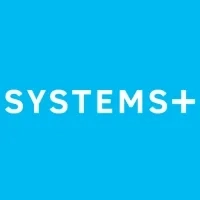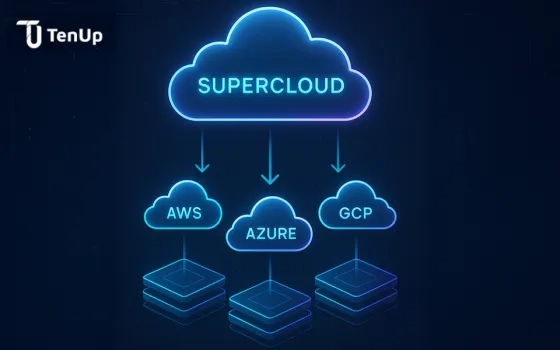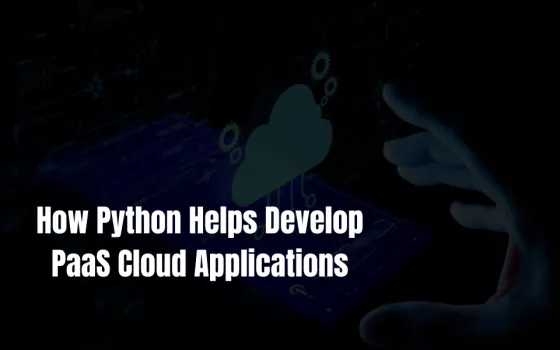Understanding the Essentials of Health Cloud Migration Services
In an era defined by digital transformation, the healthcare sector is experiencing a fundamental shift in the way it manages and utilizes data. One of the pivotal advancements in healthcare technology is the adoption of cloud-based solutions. Health cloud migration services have emerged as a critical enabler of this transition, reshaping the way healthcare organizations store, manage, and access their data. In this section, we will delve into the core essentials of health cloud migration services, emphasizing their profound importance within the healthcare sector.
The Significance of Health Cloud Migration Services
Health cloud migration services are the strategic processes and methodologies designed to facilitate the transition of healthcare data, systems, and applications from traditional on-premises infrastructure to secure and scalable cloud environments. The importance of these services in the healthcare sector cannot be overstated, as they bring forth a multitude of benefits that have a direct impact on patient care, operational efficiency, and data security.
Key Objectives of Health Cloud Migration Services
-
Scalability and Flexibility: Healthcare organizations deal with vast amounts of data that must be stored and managed efficiently. Health cloud migration services provide the scalability required to accommodate growing data volumes and fluctuations in demand. This scalability ensures that healthcare providers can adapt to changing circumstances quickly, such as during a surge in patient data or the implementation of new services.
-
Accessibility and Mobility: Cloud-based healthcare systems enable authorized personnel to access critical patient information from anywhere, at any time. This mobility is especially valuable for healthcare professionals who need to make informed decisions promptly, whether they are in a hospital, clinic, or remote location.
-
Data Security and Compliance: Protecting patient data is paramount in healthcare. Health cloud migration services are designed to adhere to strict security standards and compliance regulations, such as HIPAA (Health Insurance Portability and Accountability Act) in the United States. These services employ robust encryption, access controls, and audit trails to safeguard sensitive medical records.
-
Cost-Efficiency: Traditional on-premises healthcare IT infrastructure can be costly to maintain and upgrade. Health cloud migration services offer cost-efficiency by reducing the need for extensive in-house hardware and IT staff. Organizations can allocate resources more effectively while benefiting from predictable cloud pricing models.
-
Disaster Recovery and Business Continuity: Health cloud migration services often include built-in disaster recovery and backup solutions. In the event of unexpected disruptions, healthcare organizations can quickly recover their data and applications, minimizing downtime and ensuring continuity of care.
Core Components of Health Cloud Migration Services
Health cloud migration services encompass several core components, each playing a vital role in the successful transition to the cloud:
-
Assessment and Planning: The initial phase involves evaluating existing infrastructure, identifying migration goals, and developing a tailored migration strategy.
-
Data Migration: This phase focuses on transferring healthcare data securely to the cloud, ensuring data integrity and minimal disruption.
-
Application Migration: Healthcare applications must be rehosted, refactored, or rebuilt for cloud compatibility.
-
Security and Compliance: Robust security measures and compliance checks are integrated throughout the migration process to maintain data confidentiality and adhere to industry regulations.
-
Monitoring and Optimization: Continuous monitoring of cloud infrastructure and applications ensures performance, security, and cost-efficiency post-migration.
-
Assessment and Planning: The Foundation of Health Cloud Migration Services
Imagine building a house without a solid foundation; it's a recipe for disaster. The same principle applies to health cloud migration services. Before embarking on the journey to migrate healthcare data and systems to the cloud, the crucial first step is assessment and planning. This phase lays the foundation for a successful migration, ensuring that the process is smooth, efficient, and aligned with the unique needs of the healthcare organization.
-
The Role of Assessment and Planning
-
Understanding the Current State: The assessment phase begins by gaining a deep understanding of the current healthcare IT infrastructure. This involves taking stock of existing hardware, software, data storage systems, applications, and network configurations. It's crucial to document everything comprehensively to identify dependencies and potential challenges.
-
Identifying Business Goals: Healthcare organizations have specific objectives and goals when considering cloud migration. These goals could range from improving patient care to reducing operational costs. The planning phase involves working closely with stakeholders to identify and prioritize these objectives, ensuring that the migration aligns with the broader mission of the healthcare institution.
-
Risk Assessment: Every migration project carries inherent risks, and healthcare cloud migration is no exception. An effective assessment should include a thorough risk analysis. This involves identifying potential issues related to data security, compliance, downtime, and data integrity. Understanding these risks early allows for proactive mitigation strategies.
-
Data Assessment: Healthcare organizations deal with highly sensitive patient data. It's essential to assess the types of data being handled, their volume, and their security requirements. This step helps determine how data will be migrated, ensuring that it remains secure and accessible during and after the migration.
-
Regulatory Compliance: Healthcare is one of the most heavily regulated industries, with laws like HIPAA and GDPR governing data privacy and security. Assessment and planning must address how cloud migration can maintain or improve compliance. A comprehensive strategy should include security measures, encryption, and auditing processes to meet regulatory requirements.
-
Resource Evaluation: Assess the human and technological resources available for the migration project. Determine whether additional expertise or tools are needed to execute the migration effectively. Adequate staffing and resources are critical for a smooth transition.
-
Comprehensive Strategy Development
Once the assessment phase is complete, it's time to translate the gathered information into a well-defined migration strategy. This strategy is a roadmap that outlines the specific steps, timelines, and responsibilities for the migration project. Key elements of a comprehensive migration strategy include:
-
Phased Approach: Divide the migration into manageable phases to minimize disruption to healthcare operations. This might involve migrating less critical systems first and progressively moving to mission-critical applications.
-
Data Migration Plan: Detail how healthcare data will be transferred securely to the cloud, ensuring data integrity and minimal downtime. This plan should include data validation and testing procedures.
-
Application Compatibility: Determine which healthcare applications need to be rehosted, refactored, or rebuilt for cloud compatibility. Address any potential integration challenges.
-
Security Measures: Clearly define security measures to protect patient data during and after migration. Implement encryption, access controls, and monitoring to safeguard against data breaches.
-
Testing and Quality Assurance: Develop a comprehensive testing plan to validate that systems and applications function as expected in the cloud environment. This includes performance testing, security assessments, and compliance checks.
-
Communication Plan: Effective communication is essential throughout the migration process. Develop a plan to keep stakeholders, including healthcare staff and patients, informed about the migration's progress and any potential impacts on services.
Executing a Seamless Health Cloud Migration Service
Once the assessment and planning phases are complete, it's time to put the carefully crafted strategy into action. Executing a seamless health cloud migration service is a complex but essential step in modernizing healthcare IT infrastructure. In this section, we will delve into the practical steps involved in executing a successful health cloud migration service, with a focus on technical aspects and best practices to ensure a smooth transition.
1. Preparing the Infrastructure
-
Provision Cloud Resources: Begin by setting up the cloud infrastructure on the chosen platform (e.g., AWS, Azure, GCP). Ensure that cloud resources are appropriately sized to meet the healthcare organization's needs.
-
Network Configuration: Establish secure network connections between on-premises systems and the cloud. Implement Virtual Private Clouds (VPCs) or Virtual Networks (VNets) to maintain network isolation and security.
2. Data Migration
-
Data Extraction: Extract healthcare data from existing on-premises systems while maintaining data integrity and security. This may involve using data migration tools or services provided by the cloud platform.
-
Data Transformation: Prepare data for migration by ensuring it is in the correct format and structure for the target cloud environment. This step may require data cleansing and transformation processes.
-
Data Transfer: Use secure and high-speed data transfer methods to move data to the cloud. Depending on the volume of data, this may involve online transfers, physical data shipments, or a combination of both.
-
Data Validation: Implement rigorous data validation processes to confirm that data transferred to the cloud is complete, accurate, and consistent with the source data.
3. Application Migration
-
Rehosting or Refactoring: Depending on the assessment, migrate healthcare applications by either rehosting them in the cloud without major code changes or refactoring them to take advantage of cloud-native features.
-
Testing and Validation: Rigorously test migrated applications to ensure they perform as expected in the cloud environment. This includes functionality, performance, and security testing.
-
Data Integration: Integrate cloud-hosted applications with existing systems to maintain data flow and interoperability.
4. Security and Compliance
-
Security Configuration: Implement robust security measures, including access controls, encryption, and identity management, to protect healthcare data in the cloud.
-
Compliance Adherence: Continuously monitor and validate that the migration adheres to healthcare compliance standards, such as HIPAA or GDPR. Ensure that audit trails and compliance reporting mechanisms are in place.
5. Monitoring and Optimization
-
Continuous Monitoring: Establish monitoring tools and practices to track the performance, security, and availability of cloud-hosted healthcare systems. Implement alerts and notifications for potential issues.
-
Cost Optimization: Continuously review cloud resource usage to identify opportunities for cost optimization. This may involve rightsizing resources, implementing auto-scaling, or utilizing reserved instances.
-
Capacity Planning: Plan for future growth and resource requirements to ensure that the cloud infrastructure scales to meet the evolving needs of the healthcare organization.
6. Testing and Validation
-
User Acceptance Testing (UAT): Engage healthcare staff in user acceptance testing to validate that cloud-hosted applications meet their needs and workflows effectively.
-
Performance Testing: Perform load and stress testing to ensure that healthcare systems can handle peak usage without performance degradation.
-
Security Testing: Conduct penetration testing and security assessments to identify and remediate vulnerabilities.
7. Deployment and Training
-
Deployment: Gradually deploy the cloud-based healthcare systems and applications in production, minimizing disruption to healthcare services.
-
Training: Provide comprehensive training to healthcare staff to ensure they are proficient in using the new cloud-based tools and systems effectively.
8. Post-Migration Support
-
24/7 Monitoring: Maintain 24/7 monitoring and support for cloud-hosted healthcare systems to address issues promptly and ensure uninterrupted patient care.
-
Documentation: Keep detailed documentation of configurations, procedures, and security measures to facilitate troubleshooting and future maintenance.
Data Security and Compliance in Health Cloud Migration Services
In the healthcare industry, data security and regulatory compliance are paramount concerns. Protecting patient information and ensuring that healthcare organizations adhere to strict data privacy laws, such as HIPAA in the United States or GDPR in the European Union, is non-negotiable. When undertaking health cloud migration services, addressing these critical considerations becomes even more crucial. In this section, we will delve into how data security and regulatory compliance are integrated into health cloud migration services to maintain the confidentiality and integrity of healthcare data.
1. Robust Encryption Measures
-
Data in Transit: During the migration process, healthcare data is transferred from on-premises systems to the cloud. To safeguard this data, encryption protocols such as SSL/TLS are used to ensure that information is encrypted while in transit. This prevents unauthorized access or interception of data during transmission.
-
Data at Rest: Once data resides in the cloud, it is stored securely using encryption methods. Data-at-rest encryption ensures that even if someone gains access to the storage infrastructure, they cannot view or use the data without proper decryption keys.
2. Access Controls and Identity Management
-
Role-Based Access Control (RBAC): Implement RBAC mechanisms that grant permissions based on job roles within the healthcare organization. This ensures that only authorized personnel can access sensitive patient data.
-
Multi-Factor Authentication (MFA): Require MFA for users accessing healthcare systems in the cloud. MFA adds an additional layer of security by verifying a user's identity through multiple means, such as a password and a mobile device.
3. Regular Security Audits and Monitoring
-
Continuous Monitoring: Implement real-time monitoring of cloud infrastructure and healthcare applications to detect and respond to security threats promptly. Automated alerts can notify administrators of any suspicious activities or unauthorized access attempts.
-
Security Audits: Conduct regular security audits and vulnerability assessments to identify weaknesses in the cloud environment. These audits help healthcare organizations proactively address potential security risks.
4. Compliance Adherence
-
HIPAA, GDPR, and More: Healthcare cloud migration services must adhere to the specific regulations governing the industry. For example, in the United States, complying with the Health Insurance Portability and Accountability Act (HIPAA) is essential. In Europe, the General Data Protection Regulation (GDPR) sets stringent standards for data protection.
-
Audit Trails: Maintain detailed audit trails that record who accessed patient data, when, and why. These logs not only support compliance but also aid in forensic analysis in the event of a security breach.
5. Data Retention and Deletion Policies
-
Data Retention: Establish clear data retention policies that specify how long patient data should be stored. Implement automated processes to delete data that is no longer needed, reducing the risk of data exposure.
-
Data Deletion: Ensure that data deletion processes are irreversible and that no remnants of deleted data are left in the cloud environment.
6. Secure Data Backup and Recovery
-
Regular Backups: Conduct regular backups of healthcare data in the cloud to ensure data availability in case of system failures or data corruption.
-
Disaster Recovery: Implement disaster recovery plans to quickly restore healthcare services in the event of unexpected disruptions or data loss.
7. Employee Training and Awareness
-
Employee Training: Train healthcare staff on security best practices, including how to handle patient data securely in the cloud environment.
-
Security Awareness: Foster a culture of security awareness where employees are encouraged to report any security concerns or breaches promptly.
Monitoring and Optimization: Sustaining Health Cloud Migration Services
The successful execution of a health cloud migration service is undoubtedly a significant milestone for any healthcare organization. However, it's essential to understand that migration isn't a one-time event; it's a journey that requires continuous attention. In this final section, we'll explore the critical importance of ongoing monitoring and optimization in sustaining health cloud migration services and how this phase ensures long-term success and efficiency in healthcare operations.
1. Continuous Performance Monitoring
-
Real-time Insights: Implement monitoring tools that provide real-time insights into the performance of cloud-hosted healthcare systems. These tools can help identify bottlenecks, latency issues, or resource constraints that may affect patient care.
-
Resource Utilization: Keep an eye on cloud resource utilization. If certain resources are consistently underutilized or overutilized, adjust resource allocations to optimize costs while maintaining performance.
2. Security and Compliance Maintenance
-
Regular Audits: Conduct regular security audits and compliance checks to ensure that the healthcare organization continues to meet industry regulations and data privacy standards. Regulations can change, so staying current is crucial.
-
Security Updates: Keep software and security patches up to date to protect against emerging threats and vulnerabilities. Regularly review and update access controls and encryption protocols.
3. Cost Optimization
-
Cost Monitoring: Continuously monitor cloud costs to identify potential areas for optimization. Cloud providers offer cost management tools to help track spending and forecast future expenses.
-
Resource Rightsizing: Evaluate resource usage patterns and adjust the size and type of cloud resources accordingly. Implement auto-scaling to automatically adjust resources based on demand.
4. Scalability and Resource Planning
-
Scalability Assessments: Regularly assess the scalability of healthcare systems to ensure they can handle growing data volumes and increased usage. Plan for future resource needs.
-
Capacity Planning: Anticipate resource requirements and budget accordingly. Ensure that cloud infrastructure can accommodate the evolving needs of the healthcare organization.
5. Disaster Recovery and Business Continuity
-
Testing and Drills: Regularly test disaster recovery and business continuity plans to verify their effectiveness. Simulate scenarios to ensure rapid data recovery in case of unexpected disruptions.
-
Backup Validation: Validate data backups to ensure data integrity and accessibility in case of system failures or data corruption.
6. User Feedback and Adaptation
-
User Feedback: Solicit feedback from healthcare staff and end-users regarding their experience with cloud-hosted systems. Address any usability or performance issues promptly.
-
Adapt to Evolving Needs: Healthcare is a dynamic field, and the needs of the organization may change over time. Be prepared to adapt cloud systems and applications to meet these evolving needs.
7. Documentation and Knowledge Sharing
-
Documentation: Maintain comprehensive documentation of cloud configurations, procedures, and optimization strategies. This documentation is invaluable for troubleshooting and training.
-
Knowledge Sharing: Share knowledge and best practices among IT teams and healthcare staff to ensure that everyone is well-informed and aligned with the organization's cloud strategy.
In conclusion, the journey of health cloud migration services doesn't end with the successful migration itself; it continues with ongoing monitoring and optimization. This phase is the key to long-term success and efficiency in healthcare operations. By proactively addressing performance, security, compliance, and cost considerations, healthcare organizations can fully realize the benefits of cloud technology, ultimately improving patient care and the overall quality of healthcare services provided. The commitment to continuous improvement ensures that healthcare remains at the forefront of technological innovation while maintaining the highest standards of data security and compliance.
"Explore the future of healthcare technology with Salesforce Health Cloud – revolutionize patient care today!"




















